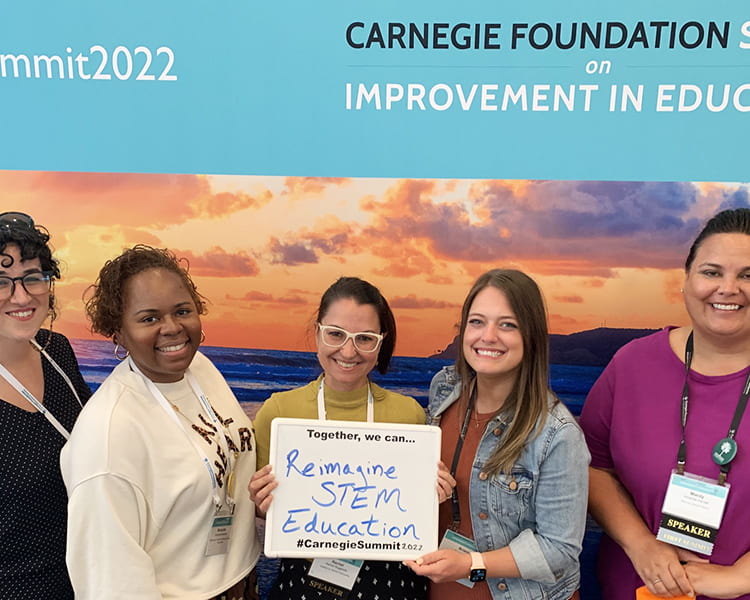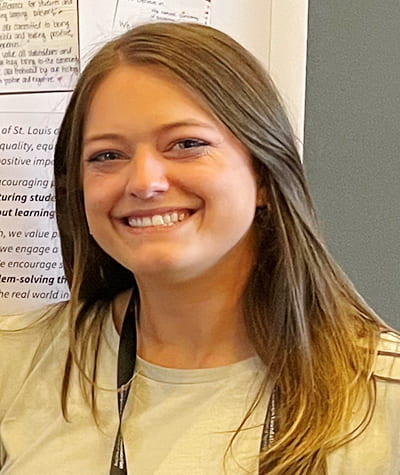
Impacting science learning beyond the classroom with one word: YES
Making science lessons memorable and engaging for students involves not only extensive planning, but also the tolerance and time for mess in the classroom.
When I think of science, it’s always messy. There’s really not an easy way to engage students in science without allowing for this chaos. Having taught 5th grade at a STEM school for 5 years, I know the effort that teachers invest each day to reach students in meaningful ways. We bring a lot of content to students who come to the classroom with different learning styles, interests and strengths. Too often, science is considered a supplemental subject, especially at the elementary level. With so much focus on developing literacy, math and foundational socio-emotional skills, finding time for science and social studies can be a challenge.
Our district aims for all of our graduates to be creative and critical thinkers who are self-aware, persistent communicators. High-quality science instruction naturally aligns with these priorities.
Shifting from full-time teaching responsibilities to my current role as a K-12 science director for a large suburban St. Louis school district did not actually remove me from the classroom. In fact, my role has expanded my footprint, giving me the opportunity to impact more classrooms, by supporting teachers who are doing the important work of getting 10,000+ students engaged in science learning. Helping a district with 11 elementary buildings, four middle schools and two high schools work toward a cohesive vision for high-quality science instruction is a big responsibility, but the work is bolstered by our district’s commitment to building a culture of improvement for staff and students.
Our district aims for all of our graduates to be creative and critical thinkers who are self-aware, persistent communicators. High-quality science instruction naturally aligns with these priorities. My role certainly involves coordinating a large team, bringing resources to classroom teachers, and creating a safe space where teachers are expanding and learning right along with their students. When teachers see the value of introducing science concepts as early as kindergarten, and have the tools they need to do so, we get closer to meeting those goals for our students.
This type of work requires a lot of listening and reflecting on the feedback given by teachers. When it comes to teaching science, there is a lot of concern for time and the chaos that comes along with preparing labs and hands-on learning experiences for students. It’s difficult to keep up with the pace of this type of instruction each day. Just acknowledging that and meeting teachers where they are with resources and support is a big part of my work.
One of those resources is the Institute for School Partnership at Washington University in St. Louis (ISP). Our district proudly partners with ISP to elevate not only our science instruction, but all STEM learning. When teachers discover the full scope of ISP’s mySci program, with lessons and activities of units that are integrated across subject areas and standards-aligned, they can approach their own professional development in ways that feel safe and empowering. The lifelong learning mindset at the heart of ISP excites me the most, not only for the dedicated teachers on my team, but my own growth as well.
In addition to taking full advantage of mySci, our district is participating in a three-year STEMpact District Immersion pilot for math instruction that includes participation in a Networked Improvement Community (NIC). Being part of the NIC has given our team access to peers in other districts who have similar goals and challenges. Engaging in problem-solving with ISP staff and other educators is wonderful.

My ISP colleagues have encouraged me to consider how I can leverage my unique skills and passions in ways that ultimately set the stage for enhanced STEM learning:
- I recently co-presented a poster with the ISP team and a NIC peer at the Summit on Improvement in Education sponsored by the Carnegie Foundation for the Advancement of Teaching. Having the opportunity to travel to San Diego to share our strategy on uniting districts toward a common educational aim and to be in the room with others excited about transforming education was really inspiring and affirming.
- Co-authoring a manuscript for the National Council for Teachers of Mathematics (NCTM) with an ISP lead researcher was a first-time opportunity that I hope will keep important conversations going. Our manuscript, “Using the Inquiry Cycle to Catalyze Change,” addresses the impact of NCTM’s Catalyzing Change in Middle School Mathematics: Initiating Critical Conversations, a book that explores serious challenges middle school teacher face as they guide students to develop positive math identities at a critical time in their development.
- I’ve also been invited to join the ISP team on editing and developing the next release of mySci content. I’m still passionate about science education and I believe that my deep relationships with the science teachers in my district keeps me grounded in the work in ways that can only make this resource even more valuable.
When I think about the ripple effect that educators who are empowered with resources can have on student success, I feel empowered to respond to new opportunities with “yes.”
ISP Blog Posts
valuing science learning
Feb 10 2023
addressing root causes
Feb 2 2023
It’s All About the Place
Dec 14 2022
Pride in STEM
Nov 17 2022
Challenging Narratives
Sept 21 2022
Embracing Diversity
May 24 2022
Impacting Science Learning
May 20 2022
Math Identity
April 23 2022
SLPS Principal Fellowship
Dec 12 2021

Briana Trager serves as K-12 Science Director for the Mehlville School District, located in south St. Louis County.